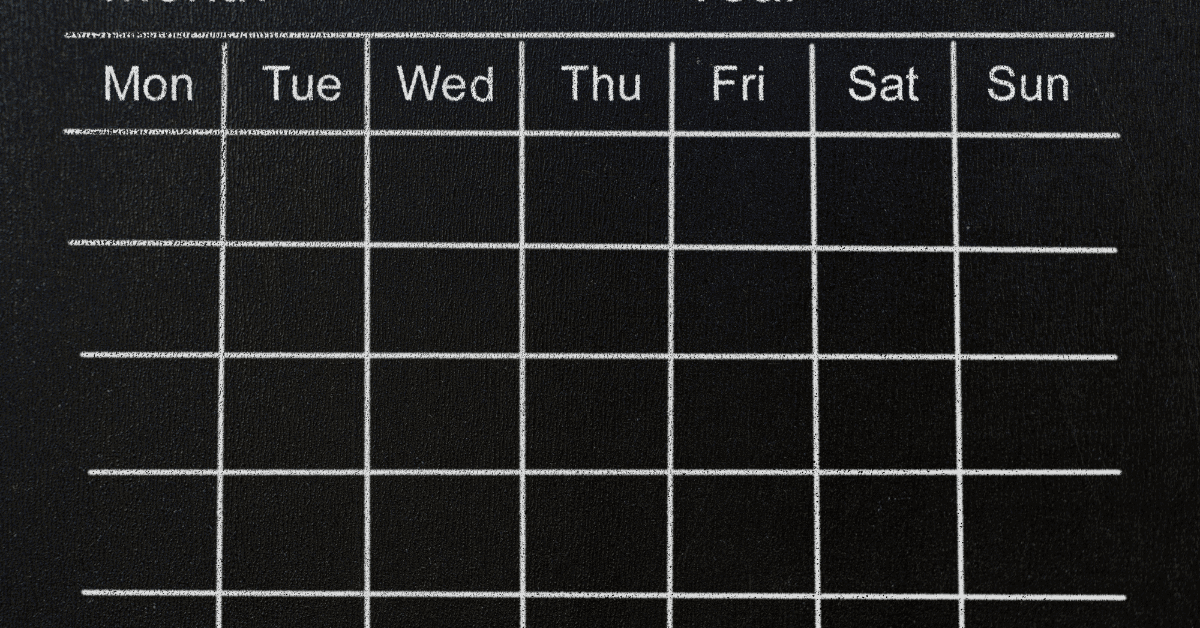The “themed days” method organizes tasks, activities, and routines by assigning specific themes to different days. This approach enhances productivity by allowing deep focus on related tasks. You can effectively batch similar work together by dedicating entire days to themes.
How do I implement the themed days method?
Identify your priorities and goals, define relevant themes, assign tasks to specific themed days, plan and schedule themed days in your calendar, implement the routine consistently while allowing flexibility, and periodically re-evaluate and adjust themes as needed.
This blog is part of a series on “time management.” The next blog is about the Pomodoro technique.
Keys to Mastering the Themed Days Method
- Identify Core Priorities: Determine which elements you need to theme
- Categorize Tasks Thoughtfully: Assign activities to relevant themed days
- Schedule with Intention: Dedicate specific days to each theme in your calendar
- Maintain Consistency: Follow through on your themed day routine consistently
- Allow Flexibility: Adapt themes and schedules as priorities shift
- Customize for Your Needs: Tailor the method to suit your unique lifestyle and preferences
Define Themes and Set Goals
Identifying priorities and setting clear goals is the foundation of the themed days method. Reflect on your responsibilities, projects, and aspirations. What are the key areas of focus in your life or work? Themed days revolve around these core elements, so take time to define them thoughtfully.
Once you grasp your priorities, categorize them into distinct themes. For instance, you might have a “writing” theme, a “client meetings” theme, or a “household chores” theme. Don’t be afraid to get creative – themed days can encompass any aspect of your life that demands dedicated attention.
With your themes defined and goals clarified, you’ll have a roadmap for structuring your themed days. Like a skilled chef seasoning a dish, you’re now ready to add layers of productivity to your weekly routine. And who knows? You might even discover a newfound appreciation for alphabetizing your spice rack on “organization” day.
Assign Tasks to Themed Days
Now it’s time to play task tetris – fitting each piece neatly into its themed day. Examine your to-do list and categorize tasks based on your established themes. Writing tasks? Those belong on your “writing” day. Client meetings? Pencil them in for “client” day. You get the idea.
As you assign tasks, consider their complexity and estimated duration. It’s generally wise to cluster similar tasks together, allowing you to maintain focus and momentum. For example, scheduling all your weekly client calls on the same day minimizes context-switching and mental juggling.

Don’t be a task hoarder, though. Themed days work best when you’re realistic about your capacity. If a themed day looks overwhelmingly full, it might be time to practice prioritization triage or reassign tasks to a different theme. The goal is a balanced, achievable schedule that supports your productivity.
Plan and Schedule Themed Days
With your tasks sorted into themed buckets, it’s time to map out your weekly calendar. Dedicate specific days to each theme, considering deadlines, natural workflow, and personal preferences. Perhaps Mondays are ideal for administrative tasks, while Wednesdays are reserved for creative projects.
| Theme | Example Tasks | Potential Benefits |
|---|---|---|
| Writing | Drafting articles, editing manuscripts, updating website content | Deep focus, creative flow, uninterrupted thinking |
| Client Management | Meetings, proposals, follow-ups, invoicing | Dedicated customer service, organized communication |
| Administrative | Scheduling, filing, email management, budgeting | Increased efficiency, reduced procrastination |
As you plan, be mindful of transitions between themed days. Leaping from intense creative work straight into analytical tasks can be jarring. Build in buffers or lighter activities to help you shift gears smoothly. A brief walk or meditation practice can work wonders for mental recalibration.
Don’t be afraid to experiment with different schedules and theme combinations until you find your groove. Themed days are meant to be a productivity aid, not a rigid straitjacket. If an arrangement isn’t working, feel empowered to change things and find a better fit.
Implement Themed Days Effectively
With your themed days planned and scheduled, it’s time to put the method into practice. Consistency and commitment are key – themed days only work if you follow through on your plan. Set reminders, eliminate distractions, and create an environment conducive to your day’s theme.
That said, life happens. Interruptions and unexpected tasks will inevitably arise. When this occurs, resist the urge to abandon your themed day altogether. Instead, prioritize the most pressing matters and pick up where you left off when possible. The beauty of themed days is their inherent flexibility.
As you gain experience with the method, you’ll develop techniques for maximizing your themed day effectiveness. Maybe you start each day with a brief review of your themed tasks. Or perhaps you build in rewards, treating yourself to a favorite snack after completing a challenging project on “writing” day.
Personal Thoughts
As someone who has faced chronic stress from demanding work environments and personal challenges, I’ve found the themed days method to be a valuable tool in regaining control and balance. By dedicating specific days to different focus areas, I can channel my energy more effectively and minimize the cognitive load that often exacerbates my stress levels.
While it took some experimentation to find the right theme combinations and schedule for my lifestyle, the flexibility of this method has allowed me to tailor it to my unique needs. I encourage others grappling with stress or anxiety to give themed days a try—they may just provide the structured reprieve they’ve been seeking.
Frequently Asked Questions
What are the benefits of the themed days method?
The themed days method enhances productivity by allowing deep focus on related tasks. Dedicating entire days to specific themes allows you to batch similar work together effectively, minimizing context-switching and mental juggling. This approach promotes better time management and organization.
How do I determine appropriate themes for my schedule?
Reflect on your responsibilities, projects, and priorities. Identify the key focus areas in your life or work, such as writing, client meetings, household chores, or creative projects. Categorize these into distinct themes that can be assigned to different days.
Can I combine multiple themes into a single day?
Absolutely. The themed days method is highly customizable to suit your unique needs and preferences. While some may prefer dedicating full days to single themes, others may find it more efficient to combine lighter themes into a single day. Experiment to find the optimal arrangement.
What if I struggle to stay on theme during the day?
Interruptions and unexpected tasks will inevitably arise. When this occurs, prioritize the most pressing matters and pick up where you left off with your themed tasks when possible. Consistency is key, but don’t be too rigid. The beauty of themed days lies in their inherent flexibility.




